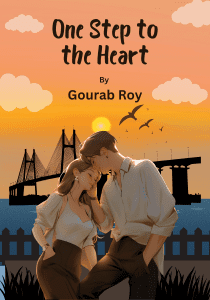John Dryden’s The Enchanted Island is a fascinating, Restoration-era adaptation of William Shakespeare’s The Tempest. First performed in 1667, Dryden’s version reworks and reinterprets many aspects of Shakespeare’s original, infusing the play with Restoration tastes, new characters, and broader comic elements. The play reflects not only Dryden’s ingenuity as a playwright but also the cultural shifts of his time—when theatergoers craved lavish, musical spectacles combined with both high drama and farcical comedy.
Though The Enchanted Island may seem at first glance merely a rearrangement of a Shakespearean masterpiece, it deserves attention for the way it demonstrates Dryden’s talent, the social and literary movements of Restoration England, and the ways in which he molded classical themes to resonate with his contemporary audience.
This article will delve into the intricacies of The Enchanted Island, offering a summary, analysis of characters, exploration of key themes, and an understanding of its place within the literary canon.
Summary and Analysis
At its core, The Enchanted Island retains the basic structure and plotline of The Tempest, though Dryden introduces notable modifications to enhance the drama, infuse it with his unique voice, and cater to the evolving tastes of his 17th-century audience.
The story revolves around Prospero, the exiled Duke of Milan, who lives on a remote, enchanted island with his daughter Miranda and his enslaved servant Caliban. Prospero, through his mastery of magic, causes a shipwreck, bringing his usurping brother Antonio, Alonso the King of Naples, Alonso’s son Ferdinand, and several others onto the island. Prospero’s grand design is to orchestrate events so that his daughter Miranda and Ferdinand fall in love, which will, in turn, restore his dukedom.
Dryden’s version, however, introduces additional layers to the narrative. In The Enchanted Island, Prospero has a second daughter, Dorinda, who is also caught up in the machinations of fate and love. Dorinda’s presence creates a parallel romantic subplot, offering further comedic and dramatic opportunities, especially through her courtship with another royal suitor, Hippolito, a character unique to Dryden’s version of the story. Hippolito, who has never seen a woman before, provides much of the farcical humor, as his encounters with Dorinda and his misconceptions about the nature of women are played out on stage.
The dynamic between Caliban and Ariel, too, is altered, with more focus on the comical aspects of their relationship. Ariel, still a servant to Prospero, is portrayed in an even more playful and mischievous light, while Caliban becomes a character who embodies not just brutishness but a pitiable figure prone to mistakes, his wit often undercut by his base desires.
Musical interludes and elaborate staging were introduced to meet the Restoration audience’s desire for visual and auditory spectacle. The changes Dryden makes—particularly the addition of Hippolito, extra love stories, and an abundance of comedy—reveal the Restoration’s penchant for excess, symmetry, and balance. This version of the tale becomes lighter, more overtly comedic, and more focused on romantic entanglements.
Character Analysis
Prospero
At the heart of The Enchanted Island remains Prospero, the exiled Duke who serves as both protagonist and the architect of the island’s events. Like Shakespeare’s Prospero, Dryden’s Prospero is learned and has turned his scholarly pursuits toward the arcane arts, using magic to control his environment. However, Dryden makes Prospero slightly less forbidding and more of a doting father. His motivation is not only to restore his political power but also to ensure that his daughters are happily wed.
Dryden’s Prospero still grapples with questions of power, control, and justice, but his portrayal seems less morally ambiguous than in Shakespeare’s original. While Shakespeare’s Prospero can come across as manipulative and autocratic, Dryden presents him in a more benevolent light, especially with the additional responsibility of managing two daughters.
Miranda
Miranda, the dutiful daughter of Prospero, remains the innocent and beautiful young woman she was in Shakespeare’s The Tempest, with Dryden maintaining her naiveté. Her love story with Ferdinand is still central to the plot, and she represents the embodiment of virtue and purity. Dryden does not make major alterations to her character, but her innocence is further emphasized by juxtaposition with her sister, Dorinda.
Dorinda
Dorinda is one of the major additions to Dryden’s adaptation. As Miranda’s sister, she too has been raised in isolation and is entirely ignorant of the world of men. Dorinda’s naiveté mirrors Miranda’s, but her role provides additional opportunities for humor and romance. Her love story with Hippolito, another character created by Dryden, brings out a more playful and comedic dimension. Dorinda’s introduction serves a dual purpose: to expand the romantic entanglements and to balance the innocence of Miranda, offering a slightly more daring romantic plotline.
Ferdinand
Ferdinand, the Prince of Naples, is another character who remains largely unchanged from his Shakespearean counterpart. He is valiant, honorable, and falls instantly in love with Miranda. In The Enchanted Island, his love story is still one of idealized romance, though it shares the stage with other romantic subplots, allowing for more balance between the various couples.
Hippolito
Hippolito is one of the most significant inventions in Dryden’s version of the play. Having never seen a woman before, Hippolito’s interactions with Dorinda lead to comedic misunderstandings and slapstick situations. His character adds depth to the play’s exploration of gender dynamics, but this exploration is often humorous rather than serious. Hippolito is portrayed as naïve and ignorant, and his encounters with Dorinda lead to a love story that balances romantic idealism with farcical elements.
Caliban
Caliban, the deformed slave of Prospero, is rendered more comical in Dryden’s adaptation. While Shakespeare’s Caliban is often interpreted as a representation of colonialism or the uncivilized “Other,” Dryden plays up the comedic aspects of the character. Caliban’s brutishness, greed, and unintentional humor are brought to the fore. He remains a pivotal figure in the plot, but his presence is lighter, focusing more on his inability to rise above his base nature, even when given opportunities for mischief.
Ariel
Ariel, the airy spirit bound to serve Prospero, is portrayed as more mischievous and playful in The Enchanted Island. While Ariel in Shakespeare’s version has moments of melancholy and longing for freedom, Dryden’s Ariel seems more at ease in his servitude and focused on the enjoyment of his magical tricks. Ariel’s role in the play maintains the balance between the supernatural and the mortal, though Dryden makes him more of a comic figure, adding levity to his scenes.
Themes in The Enchanted Island
Power and Control
One of the primary themes of The Enchanted Island, inherited from The Tempest, is the nature of power and control. Prospero’s authority over the island, his manipulation of events, and his dominion over Ariel and Caliban are central to both versions. However, Dryden’s play offers a slightly softened view of Prospero’s control. Where Shakespeare’s Prospero might be seen as more tyrannical, Dryden’s version portrays him as a father who exercises his power to secure his daughters’ futures, rather than solely to regain his political status.
This softened portrayal of power reflects the political climate of Restoration England. The restoration of Charles II to the throne in 1660 marked the end of the English Civil War and the Cromwellian republic, a period of intense political upheaval. Dryden’s portrayal of Prospero might be seen as a reflection of the general desire for stability, order, and a return to traditional forms of governance.
Love and Innocence
Love, particularly youthful and innocent love, is a theme Dryden expands significantly in The Enchanted Island. While The Tempest features the love story between Ferdinand and Miranda as its emotional core, Dryden’s addition of Hippolito and Dorinda allows for further exploration of romantic relationships. Both sisters’ complete lack of experience with men emphasizes the theme of innocence. Their ignorance of worldly matters is not just a character trait but a larger reflection of the isolated and enchanted nature of the island itself.
In many ways, the romantic entanglements serve to highlight the innocence of both women and men in their natural state. This innocence is eventually dispelled, but in a lighthearted, comedic way that underscores the Restoration audience’s preference for harmony and romantic fulfillment.
Nature versus Nurture
Another theme explored in The Enchanted Island is the tension between nature and nurture. The isolated upbringing of Miranda and Dorinda raises questions about human nature—whether innocence and virtue are inherent or shaped by one’s environment. The introduction of Hippolito, who has never seen a woman, further complicates this theme. His initial confusion and misunderstanding of women provide comic relief but also hint at deeper questions about the roles that society and experience play in shaping human behavior.
Caliban, too, embodies this theme, though in a different way. His brute nature is emphasized more in Dryden’s version, but it raises the same question as Shakespeare’s: Is Caliban’s malevolence and base nature a product of his environment, or is it something inherent in him? While Shakespeare’s play leaves this question open to interpretation, Dryden’s version leans more toward the comedic, using Caliban’s baseness as a source of humor rather than philosophical reflection.
The Supernatural and Fate
The supernatural elements of The Enchanted Island are central to the plot and themes of the play. Magic, fate, and the idea of destiny govern the actions of the characters. Prospero’s magical control over the island is what allows him to manipulate events to his advantage, but it is also clear that some aspects of fate are beyond his control. The love between Ferdinand and Miranda, for example, seems predestined, as does the eventual resolution of the play’s conflicts.
Ariel and the other spirits of the island serve as intermediaries between the human and the supernatural, but in Dryden’s version, these elements are often more playful than threatening. The Restoration audience’s love of spectacle is reflected in the way the supernatural is presented—less as a source of dread or awe, and more as an opportunity for visual and musical enchantment.
Conclusion
John Dryden’s The Enchanted Island is an ambitious adaptation of Shakespeare’s The Tempest, reshaped to meet the tastes and sensibilities of the Restoration theatergoers. Through its expanded focus on romance, comedy, and spectacle, Dryden’s version offers a unique window into the cultural shifts of the 17th century.
While it retains many of the themes and characters of Shakespeare’s original, Dryden’s adaptation transforms the narrative into something lighter and more aligned with the Restoration’s appetite for lavish entertainment. Prospero’s pursuit of power is tempered by his fatherly concern for his daughters, while the island’s supernatural elements provide a backdrop for romantic comedy rather than metaphysical reflection.
Ultimately, The Enchanted Island stands as a testament to the adaptability of Shakespeare’s works and the creative power of Dryden, who managed to both honor and transform one of literature’s greatest plays for a new era of theater.



